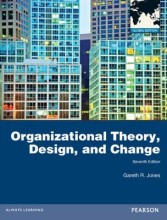Mechanistic and organic organisational structures
4 important questions on Mechanistic and organic organisational structures
What is the difference between a mechanistic structure and an organic structure? What choices define the structures?
- Individual specialisation
- Employees work separately
- Simple integrating mechanisms
- Hierarchy of authority
- Centralisation
- Standardisation
- Work process is predictable
- Joint specialisation
- Employees work together
- Complex integrating mechanisms
- Task forces and teams
- Decentralisation
- Mutual adjustment
- Work process is unpredictable
How should an organisation decide the organisational design according to the contingency approach?
Design internal structure to control the external environment
What did Lawrence and Lorsch find out about organisational structure and the external environment an organisation operates in?
Stable environment -> Little need for change (Mechanistic)
Organisations must adapt their structures to match the environment in which they operate if they want to be effective.
- Higher grades + faster learning
- Never study anything twice
- 100% sure, 100% understanding
What did Burn and Stalker find out about organic and mechanistic structures in relation to the environment and their effectiveness?
- Need for quick decision making
Mechanistic structures are more effective in a stable environment.
- No need for complex decision making systems
The question on the page originate from the summary of the following study material:
- A unique study and practice tool
- Never study anything twice again
- Get the grades you hope for
- 100% sure, 100% understanding






























